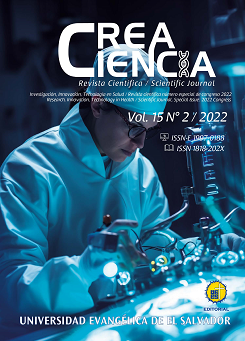a robot for social interaction with autistic children
DOI:
https://doi.org/10.69789/creaciencia.v15i2.658Keywords:
Robi, autism, robot, therapies, EL SalvadorAbstract
The present research was based on the creation, development, and implementation of a robot with the appearance of a six-year-old child; its main function is to serve as a support tool in classroom activities, both for therapists and teachers, focused on the social interaction of autistic children. The robot named "Robi" is a humanoid robot with the appearance of a child; it is capable of performing various basic activities focused on the social interaction of children with special needs, including autism. Based on previous research,(1) the robot was built to support therapies for children with special needs. The new research was developed over four years, one year longer than planned due to the events of the 2020 pandemic; in 2021 the robot was redesigned and, ubsequently, fieldwork was carried out at the Special Education School in the department of Usulután, El Salvador. Specialists in mechatronics, health, psychology, and education were involved in the creation and validation of indicators to measure the results of the therapies facilitated to the children. At the end of the research, children who participated in activities with the robot showed progress in interaction based on certain criteria; recommendations are provided for future research to achievebetter results than those obtained in this study.
Downloads
102
Downloads
Published
How to Cite
Issue
Section
License

This work is licensed under a Creative Commons Attribution-NonCommercial-ShareAlike 4.0 International License.
© Crea Ciencia
Declaration of originality and assignment of rights
The article must be sent with a declaration of originality, responsibility and assignment of rights of copy of the manuscript, scanned and signed by the author or by one of the authors when the authorship is collective (designated author), stating that the text has not previously published in printed or electronic format, which will not be presented to any other media before knowing the decision of the journal Crea Ciencia and that, if accepted for publication, the authors transfer the copyrights in all forms and media known. At the end of six months of the publication, the text can be shared in another magazine citing the first version of the article published in Crea Ciencia and recording its number and volume. If the article is not published, the UEES agrees to return the rights enunciated to their authors.

Crea Ciencia articles are published in open access and licensed under a Creative Commons Attribution-NonCommercial 4.0 International License.

